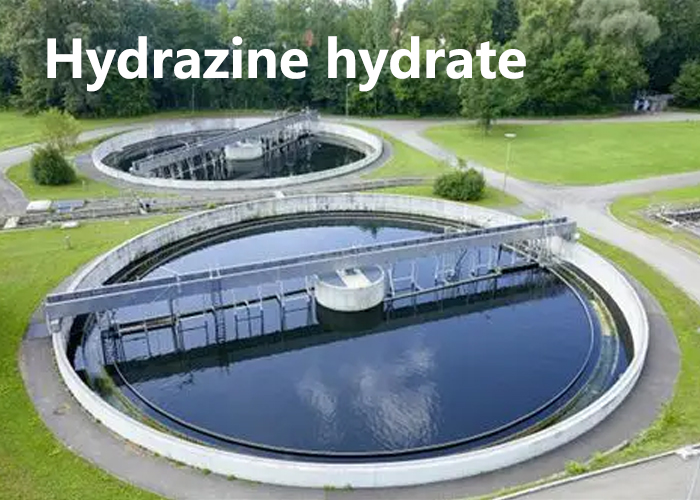Hydrazine Hydrate: Key Insights, Common Issues
Hydrazine Hydrate is a widely used chemical in industries ranging from water treatment to pharmaceutical and chemical synthesis. As a versatile reagent, it plays a critical role in applications requiring reducing agents, corrosion inhibition, or high-purity chemical reactions. However, like any chemical material, the handling, storage, and utilization of Hydrazine Hydrate come with potential challenges that need careful attention.
1. Common Issues in Hydrazine Hydrate Handling
a. Concentration and Purity Deviation
Hydrazine Hydrate’s performance can be affected if the concentration or purity deviates from specifications. Impurities or incorrect concentration levels can reduce efficiency in chemical reactions or water treatment processes. Causes of deviation include improper storage conditions, contamination during transfer, or prolonged exposure to air. It is essential to regularly measure the concentration and ensure proper storage in tightly sealed containers under controlled conditions.
b. Corrosion and Material Compatibility
Hydrazine Hydrate is highly reactive, which can lead to corrosion of storage tanks, pipes, and other handling equipment. Factors contributing to corrosion include exposure to metals that are not chemically compatible, prolonged storage at elevated temperatures, or high-concentration solutions in unsuitable containers. The solution is to use corrosion-resistant materials such as stainless steel or lined containers and regularly inspect equipment for signs of corrosion.
c. Evaporation and Volatility
Due to its volatile nature, Hydrazine Hydrate can evaporate if storage is inadequate, resulting in a decrease in effective concentration and potential safety hazards. Evaporation may be accelerated by improper sealing or storage in high-temperature environments. Regularly checking seals, lids, and container integrity is crucial to prevent loss of material and maintain consistent product quality.
d. Safety and Handling Risks
Hydrazine Hydrate is highly toxic and can be dangerous if improperly handled. Exposure can cause skin irritation, respiratory issues, or more severe health effects in extreme cases. Safety risks increase during transfer, measurement, or chemical reactions if protective measures are not strictly followed. Implementing strict Hydrazine Hydrate safety measures—including wearing protective equipment, using fume hoods, and providing proper training—is essential to ensure safe handling.
e. Decomposition or Contamination
Over time, Hydrazine Hydrate can slowly decompose, particularly under exposure to heat, light, or incompatible chemicals. Contaminants from external sources can also compromise quality and reduce efficiency in downstream applications. Routine testing and quality control checks are necessary to detect any changes and maintain the chemical’s reliability.
2. Hydrazine Hydrate Applications
Hydrazine Hydrate has extensive applications in chemical, industrial, and laboratory settings. Some of the most common uses include:
Water Treatment: Hydrazine Hydrate is used as an oxygen scavenger in boiler water systems to prevent corrosion and extend equipment life. Its reducing properties make it ideal for protecting metal surfaces in high-pressure and high-temperature environments.
Pharmaceutical and Fine Chemicals: In the synthesis of pharmaceuticals, dyes, and agrochemicals, Hydrazine Hydrate serves as a key reducing agent. Maintaining proper concentration and purity is critical to ensure consistent yields and product quality.
Polymerization and Fuel Additives: It is also employed in polymer production and as a component in fuel formulations for specialized industrial engines. The efficiency of Hydrazine Hydrate in these applications depends on precise handling and controlled storage conditions.
Regular monitoring and proper handling directly impact performance in these applications, emphasizing the importance of consistent quality and reliable suppliers.
3. Best Practices for Storage and Maintenance
To ensure Hydrazine Hydrate retains its effectiveness and safety, the following practices are recommended:
Regular Inspection and Cleaning
Check containers, pipelines, and transfer equipment for leaks, corrosion, or contamination. Keep storage areas clean and free from incompatible materials.Monitor Concentration Levels
Regularly test the solution for concentration and purity, ensuring it meets required specifications for chemical reactions or industrial processes.Temperature Control
Store Hydrazine Hydrate in a cool, ventilated area away from direct sunlight. Avoid high temperatures that could accelerate decomposition or evaporation.Corrosion Prevention
Use corrosion-resistant storage tanks and pipelines. Inspect equipment periodically and replace any components showing signs of wear or corrosion.Safety Training for Operators
Ensure all personnel handling Hydrazine Hydrate are trained in proper procedures, including the use of personal protective equipment (PPE), emergency response, and spill containment.Labeling and Documentation
Clearly label all containers and maintain detailed logs of storage dates, batch numbers, and handling procedures to guarantee traceability and compliance.Environmental Control
Ensure proper ventilation and secondary containment to prevent accidental release or exposure to the environment.Replace Aged or Contaminated Material
Dispose of any decomposed or contaminated Hydrazine Hydrate in accordance with local regulations and environmental guidelines.
4. Partnering with Reliable Suppliers
For companies looking to source Hydrazine Hydrate, it is critical to work with trusted Hydrazine Hydrate suppliers who can provide high-quality material consistently. Reliable suppliers offer:
Guaranteed concentration and purity
Regular quality testing and documentation
Safe and compliant packaging
Technical support for industrial or laboratory applications
Hengnai Chemical has long-standing experience in supplying Hydrazine Hydrate to industrial clients, ensuring stable delivery and technical guidance to meet varying application requirements.
5. Conclusion
Hydrazine Hydrate is an indispensable chemical in multiple industries, offering unparalleled utility in water treatment, chemical synthesis, and industrial processes. However, due to its reactive and toxic nature, proper handling, storage, and quality monitoring are essential. Implementing strict Hydrazine Hydrate safety measures, partnering with reputable suppliers, and following best practices can maximize efficiency, maintain safety, and extend the chemical’s lifecycle.
Whether you require small-scale laboratory quantities or large-scale industrial supply, choosing a reliable partner ensures consistent performance, safety compliance, and operational peace of mind.
If your company is interested in stable Hydrazine Hydrate supply or wants to discuss pricing for bulk orders, please contact EAST Chem directly. Our team can provide high-quality products with reliable delivery schedules to meet your production or research needs.